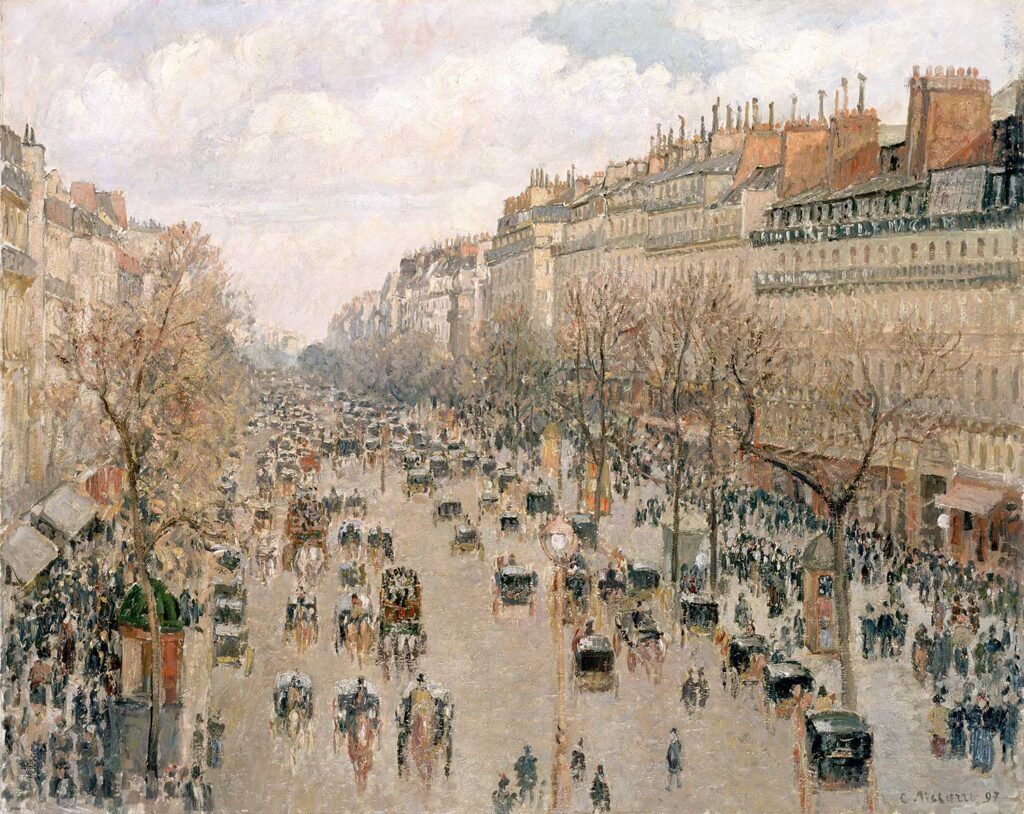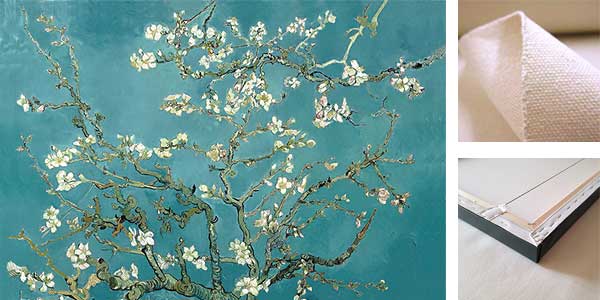
The Boulevard Montmartre in Paris by Camille Pissarro was created in 1897. The painting is in Hermitage Museum, St. Petersburg. The size of the work is 74 x 92,8 cm and is made of oil on canvas.
Like Claude Monet, Pissarro, an outstanding representative of the Impressionist movement, often painted whole series of works showing the same motif. This painting belongs to a series of views the Boulevard Montmartre, for which the artist rented a room in the Grand Hotel de Russie from which he could see all the “grands boulevards”. Pissarro depicted this view at different hours of the day, in different weather conditions, creating a total of 13 paintings taken from the same viewpoint.
Here the master skilfully conveyed the rich atmospheric effects, the complex colours and ethereal feeling of a gloomy day. This image of fast-moving, dynamic urban life, so convincingly captured by the artist’s rapid brushwork, presents the image of a contemporary city – not in a ceremonial or official mood, but animated and alive. Such urban landscapes formed the central motif in Pissarro’s work…Read more in Hermitage Museum
About the Artist
Jacob Abraham Camille Pissarro (10 July 1830 – 13 November 1903) was a Danish-French Impressionist and Neo-Impressionist painter born on the island of St Thomas (now in the US Virgin Islands, but then in the Danish West Indies). His importance resides in his contributions to both Impressionism and Post-Impressionism. Pissarro studied from great forerunners, including Gustave Courbet and Jean-Baptiste-Camille Corot. He later studied and worked alongside Georges Seurat and Paul Signac when he took on the Neo-Impressionist style at the age of 54.
In 1873 he helped establish a collective society of fifteen aspiring artists, becoming the “pivotal” figure in holding the group together and encouraging the other members. Art historian John Rewald called Pissarro the “dean of the Impressionist painters”, not only because he was the oldest of the group, but also “by virtue of his wisdom and his balanced, kind, and warmhearted personality”. Paul Cézanne said “he was a father for me. A man to consult and a little like the good Lord”, and he was also one of Paul Gauguin’s masters. Pierre-Auguste Renoir referred to his work as “revolutionary”, through his artistic portrayals of the “common man”, as Pissarro insisted on painting individuals in natural settings without “artifice or grandeur”. Read more in Wikipedia
Order a reproduction of this work (printed on canvas)
